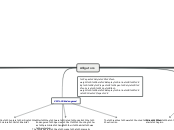Alligators
I Teeth
A.In an alligators snout, about 74 to 80 teeth at a time are in it
1 An average alligator can go through 2,000 to 3,000 teeth in a lifetime
They loose teeth by catching their prey and eating it
Alligators have wider U-shaped snouts while, crocodiles
have more of a V-shaped snout
It easy to define an alligator by their teeth
II Adaption
Modern Alligators have many adaptations
Skin extremely tough
Are cold-blooded
Have extremely thick plates
Rough skin for stalking their prey, which looks like a floating log
III Predators and Prey
When they mature they eat different food such
as larger fish such as gar, turtles, and various mammals particularly coypu, and muskrat
Small alligators get eaten by eagles, egrets and herons and so do carnivorous mammals such as wild pigs
IV Living
Have been living for millions of years
Described as living fossils
Can live up to 30-50 years old (average)
Crocodiles and alligators live side by side in only
in South Florida
Males average body weight: 1,000 pounds or a half of a ton
Grows about 2" per year to 12" per year, depending
on the habitat the alligator is living in
American alligators occur in Florida, southern Texas,
Louisiana and parts of North and South Carolina Georgia and Alabama
The majority of American alligator inhabit Florida and
Louisiana
The alligators range appears to have been increasing northward in the last few years
V Diet
When young alligators eat fish, insects, snails, crustaceans
and worms
Alligators are carnivores
VII Endangered
Were extinct by hunters killing them in their natural
habitat
After they were listed under the Endangered Species Act, hunting was prohibited and their habitat was protected
The reptiles were hunted close to extinction
The species has made a dramatic recovery and was removed from the endangered species list in 1987
VIII Life Cycle
When they hatch the life cycle starts again
Lay about 10 to 70 eggs at a time
IX Deaths
Most of them don't die of natural causes
Could die of starvation
Could die of their predators
X Offspring
Mate in June
Hatchling's can go catch food when they are first born
In September, when the young are ready to hatch, she will help them by moving the excess debris from the eggshell from when they are born
lay 20-50 eggs average
Takes 65 days to hatch after mating
Eggs are gender neutral pending on the temperature incubation, will determine if it's a male of female.
86 degrees F it will be a male
temperatures below 86 F will be female
XI Habits
Alligators are social creatures
often stay in groups called " congregations"
groups typical are being seen basking in the sun
or taking a swim
This is because they can control their temperatures internally
Used water to hunt
XII Differences between Crocodiles and Alligators
Alligators are found only in the US and China where
Crocodiles can be found across the world
Alligators prefer more of freshwater while, crocodiles like more of a salty water
Crocodiles are more of a lighter green other then alligators are darker green
Alligators, seem more tame compared to crocodiles
XIII Webbed Feet
Alligators have webbed back feet
Webbed feet come in handy for swimming quickly
Some amphibians and reptiles have webbed feet and they use them in the same ways as birds
Tail
An alligators tail can be used to swim faster in water
to catch prey
An Alligator uses it's powerful tail to propel itself
through water
While alligators are fast in water they are generally slow
on land
The tail accounts for half of an alligators length
Behaviors
The largest males and females will defend prime territory
Large male alligators are solitary, territorial animals
